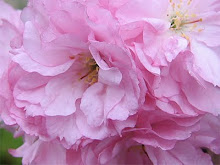
4. Northwest Bounty — The Extraordinary Foods and Wonderful Cooking of the Pacific Northwest, by Schuyler Ingle and Sharon Kramis, forward by Marion Cunningham, © 1988
“Lynn’s Baked Chicken Dijon” and “Snickerdoodles” — if this cookbook had only these two recipes in it, that would be enough for me! But it also has recipes for various seafood, vegetables, and fruit dishes that are really very good.
I like the layout and organization of this cookbook — I think it’s one of the best — because the ingredients are listed out separately from the instructions, and in the order that they will appear in the procedure.
The recipes are easy to adapt into healthier, vegetarian, and whole-food options. For example, I like to substitute thick slices of squash, eggplant, or tofu for the chicken in “Lynn’s Baked Chicken Dijon” and whole grain flour, Organic Straus Family Creamery butter, and a fraction of the sweetener in “Snickerdoodles."
Check out the recipe on page 337 for "Manor Farm Inn bread". Coincidentally, I've stayed at the Manor Farm Inn, Poulsbo, Washington and had the pleasure of eating this hearty, whole grain bread there too. It's delicious. Just for fun, I did a web search and found an adaptation of the recipe for Manor Farm Inn bread to use in a bread machine: "Adventures In Bread Making". The recipe is also mentioned on the last pages of a 5-page article of the Manor Farm Inn (January 1, 1989) for The Philadelphia Inquirer.
Note: As of January 2nd 2012, I see that Amazon.com has Northwest Bounty cookbooks available for purchase, either as used hardback copies or in a new paperback form.
Related Blog Articles:
My Top Ten Favorite Cookbooks
The Benefits Of Whole Foods
Trying Out New Cookie Recipes







































































